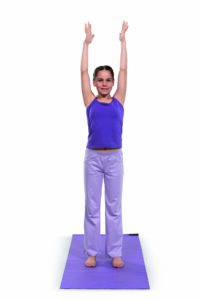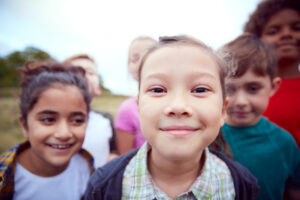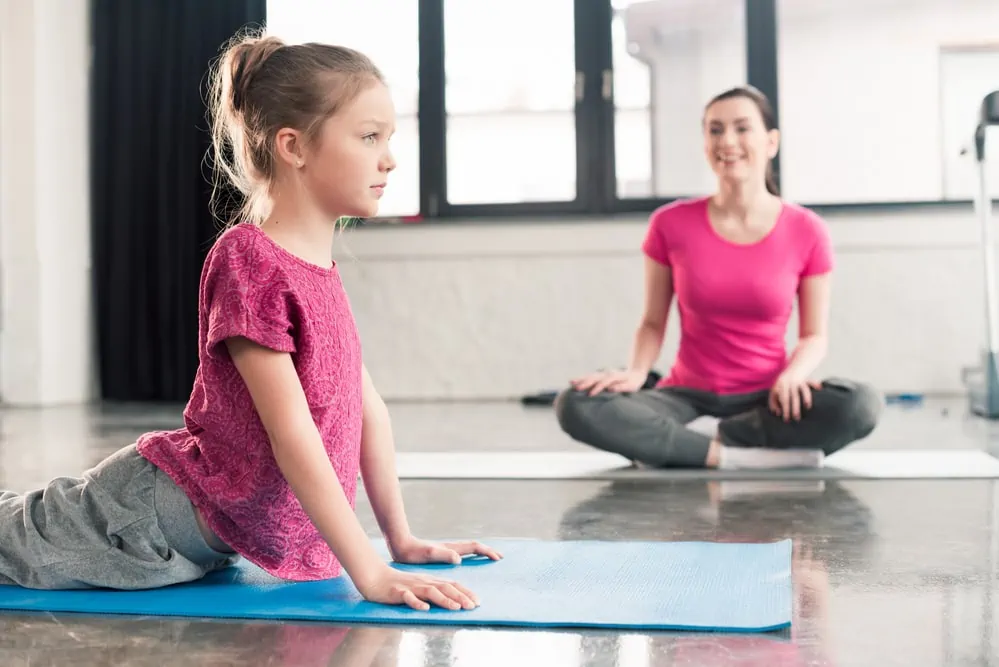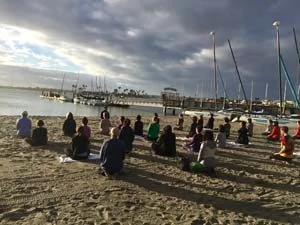Like the first two principles in this series, the third focuses on a key aspect of mindfulness. Where Stillness prepares for Listening and Listening puts attention on the present moment, Grounding brings a person physically, cognitively, and emotionally into the present. It is the embodiment of self-regulation and a foundation for Strength.
Grounding in Action
Jessica was a fourth grader who had been diagnosed with severe ADHD. Her emotions ran big and her social skills, small. She tended to blurt things out. On the playground at recess, Jessica’s classmates often teased her to the point of tears, embarrassing her deeply.
“What can I do when the other kids tease me?” she asked one day in yoga class.

Several days later, Jessica came bursting into my room, beaming. “It worked, Mrs. Gillen! It really worked!”
“What worked?” I asked.
“The thing we did in yoga! When the kids started teasing, I pretended I was strong and that my mom was holding onto my feet. I breathed into my belly and told the kids to stop. And they stopped!”
She looked as though she didn’t quite believe it. What she had experienced was the ability to ground herself physically and emotionally.
The Ground Is Always There
By teaching kids Grounding skills, we help them connect to the Earth and feel safe and secure, gaining a sense of control over their environment. Learning to bring their awareness to both the present moment and their own bodies, they learn that they can call on their bodies, the Earth, and their community of loved ones to support them.
The ground is always there.
Yet recognizing this can sometimes be challenging. There are so many temptations that can easily take us out of the present and out of our selves, in the sense that we become unaware or even desensitized to what our bodies are trying to tell us.
Perhaps nowhere is this clearer than with children who have experienced trauma and learned to dissociate as a defense mechanism. When the present is threatening or terrifying, who wouldn’t want to distance themselves from it all?

When children begin to develop Stillness, Listening, and Grounding skills, they are sometimes startled by the difference between what they’re learning to do and what they’re familiar with. Here, I think of one student who told me all about how playing violent video games really helped him “relax.” After learning Pulse Count and developing a sense of what relaxation actually feels like, he became acutely aware of how his body did not, in fact, relax while he was playing his favorite games.
The Ultimate Goal of Grounding
The ultimate goal of Grounding is to help children develop a sense of physical awareness and safety in their bodies, and, along with that, a realistic understanding of their abilities and needs. Yoga Calm Grounding activities such as Mountain, Roots, Back Breathing, Block Creek, and many others provide opportunities for students to experience the feeling of being physically present, stable, strong, and supported.

As with all yoga practices, it’s important to introduce Grounding activities slowly and proceed accordingly. When poses are taught quickly, without time to develop inner awareness, injuries are more likely to occur and students may develop a practice that’s actually disconnected from their physical awareness – in essence, creating another distraction. Children need to be encouraged to practice and listen to physical cues at the same time. In that way, the practice becomes much more integral to their everyday being.
And the students become that much better prepared for academic learning.
Adapted from Yoga Calm for Children





